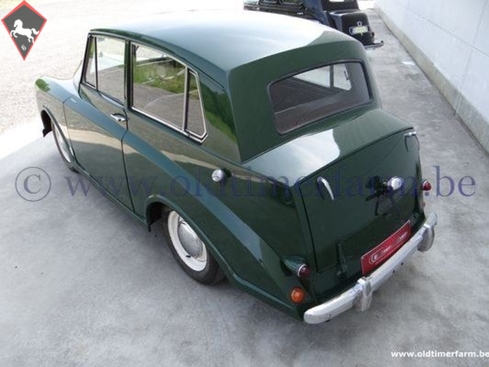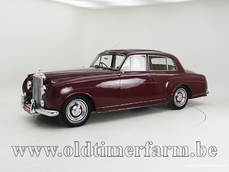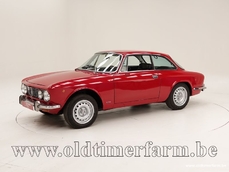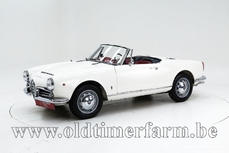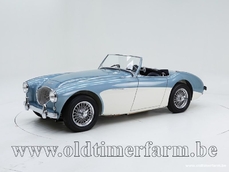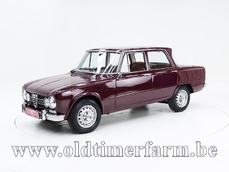Triumph Mayflower Saloon '53 1953
Allgemeine Beschreibung :
Belgian papers, very good shape (from Wikipedia, the free encyclopedia) The Triumph Mayflower is a small car which was produced by Britain's Triumph Motor Company from 1949 until 1953. It was the first small car to be built by Triumph under new owners, the Standard Motor Company. It used a version of the pre-war Standard 10 side-valve engine updated by having an aluminium cylinder head and single Solex carburettor. The engine developed 38 bhp (28 kW) at 4200 rpm. The 3-speed gearbox, with column shift, came from the Standard Vanguard and had synchromesh on all the forward ratios. There was independent suspension at the front using coil springs but a solid back axle and half-elliptic leaf springs, also based on the one used on the Vanguard, was at the rear.[citation needed] The front-suspension design was used on the Triumph 20TS prototype and, with modifications, on the Triumph TR2. Lockheed hydraulic brakes were fitted. A Mayflower tested by the British magazine The Motor in 1950 had a top speed of 62.9 mph (101.2 km/h) and could accelerate from 050 mph (80 km/h) in 26.6 seconds. A fuel consumption of 28.3 miles per imperial gallon (9.98 L/100 km; 23.6 mpg-US) was recorded. The test car cost £505 including taxes. In the same year the similarly sized but less well equipped and more aggressively priced Morris Minor was advertised at £382. The Mayflower had traditional "razor edge" styling similar to its larger brother, the Triumph Renown, and apeing the looks of the upmarket Bentley and Rolls-Royce cars. It was hoped this would be especially appealing to the American market. The car was of unitary construction with steel body panels and was built by Fisher and Ludlow at Castle Bromwich, Birmingham to a design by Leslie Moore, chief body designer of Mulliners of Birmingham with input from Triumph's Walter Belgrove. As well as the saloons, ten drophead coupés were built in 1950. The styling, created at the behest of Standard's Managing Director Sir John Black, proved controversial and tends to polarise opinion. Although it has many admirers, others share the opinion of Top Gear presenter James May, who called it the ugliest car of all time in one of his columns. The Mayflower was an attempt to create a small car with an upmarket image, and failed to meet its sales targets. Standard-Triumph's next small car, the Standard Eight, was launched with a very basic specification and aimed at a different type of buyer. From the ending of Mayflower production in 1953 there was no small Triumph saloon available in the UK until the launch of the Triumph Herald in 1959, although in some overseas markets derivatives of the Standard 8 were sold as Triumphs. SpecificationsBodyworkLength : cm (in): 391 (154) Width : cm (in): 157 (62) Height : cm (in): 157 (62) Wheelbase : cm (in) : 213 (84) Weight: kg (lb) : 930 (2050) Mechanics. Displacement : straight 4 , 1247 cc (76 ci)front mounted Valve gear : 8 Fuel system : 1 Solex carburettor Gearbox : 3 speed manual Drive wheels : rear-wheel drive Maximum power : 38 bhp at 4200 rpm Maximum torque : 80 Nm at 2200 rpm Maximum speed : 106 km/h (66 mph) This car is just in at Oldtimerfarm, Aalter Belgium. Steenweg op Deinze 51C. Teusday-Saterday 10-17h (no appointment needed) Sunday: closed. Monday strictly on appointment. We specialize in consignment sales of collection cars. We are proud we can offer this car for sale. A more detailed description will soon follow. In the meantime you can have a look at the very ample photo coverage on the website. Of course Xavier or Olivier will be very happy to give you all possible explanations by phone on +32472401338.Meet us at:You can meet us at these events where we will show a sample of our stock22-25/10/2015 Auto d\'epoca Fiera di Padova30-01/11/2015 Classic & Sports Cars Show London06-08/11/2015 Interclassics Brussels 201519-20/12/2015 Dreamcar International Kortrijk14-17/01/2016 Interclassics Maastricht \'16Auto Retro Brugge13-14/02/2016 Flanders Collection Car - Gent04-06/03/2016 Antwerp Classic Salon18-20/03/2016 Milano Autoclassica06-10/04/2016 28th Techno-Classica Essen - Duitsland29-01/05/2016 OLDTIMERFARM : Opendeurdagen/Journees Portes Ouvertes/ Open Door event
http://www.oldtimerfarm.be/en/collection-cars-for-sale/1536/triumph-mayflower-saloon-53.php
1953 Triumph Mayflower Saloon '53 is listed verkauft on ClassicDigest in Aalter by Oldtimerfarm Dealer for €9950.
Fakten der Auto
Karosserietyp : Auto Marke : Triumph Modell : Mayflower Ausführung : Saloon '53 Hubraum : 0.0 Modelljahr : 1953 Lage : Aalter Fahrzeug Anmeldung : Normal
Verkauft
Angaben Zum Verkäufer
Verkauft
Other cars listed for sale by this dealer
über Triumph
Triumph, ein Name, der mit klassischen Sportwagen und innovativen Designs synonym ist, hat eine reiche und bewegte Geschichte in der Automobilwelt.Die Geschichte von Triumph begann im späten 19. Jahrhundert, als das Unternehmen zunächst Fahrräder produzierte und dann in die Motorradherstellung expandierte. Es war jedoch in den 1920er Jahren, dass Triumph in die Produktion von Automobilen einstieg. Im Laufe der Jahre wurde Triumph für seine hochwertigen Fahrzeuge bekannt, die Leistung mit Stil kombinierten.
Eines der ikonischsten Modelle von Triumph war der TR3, der Ende der 1950er Jahre eingeführt wurde. Es war ein klassischer britischer Sportwagen, geliebt für sein einfaches, aber elegantes Design und ein aufregendes Fahrerlebnis. Der TR3 war ein Symbol für bezahlbaren Sportwagen-Genuss und legte den Grundstein für eine Reihe erfolgreicher TR-Modelle, darunter der TR4, TR5 und TR6.
Neben den Sportwagen machte sich Triumph einen Namen mit von Michelotti entworfenen Limousinen. Der Triumph Herald, Anfang der 1960er Jahre eingeführt, war ein kompaktes Familienauto, das mit stilvollem Design und solider Technik punktete. Später bediente der Triumph 2000 und 2500 Limousinen einen gehobeneren Markt und erlangte einen Ruf für ihren komfortablen Fahrkomfort und ihr elegantes Aussehen.
Trotz seiner Erfolge sah sich Triumph im Laufe der Jahre zahlreichen Herausforderungen gegenüber, darunter finanzielle Schwierigkeiten und Eigentümerwechsel. In den 1980er Jahren durchlief die British Leyland, das Unternehmen, das Triumph besaß, eine umfassende Umstrukturierung, und die Marke Triumph wurde allmählich eingestellt.
Das Verschwinden der Marke Triumph war in der Tat traurig und in gewissem Maße beschämend. Das Unternehmen, das geliebte Sportwagen und angesehene Limousinen produziert hatte, verschwand langsam. Im Jahr 1984 rollte das letzte Fahrzeug mit dem Triumph-Logo von der Produktionslinie und markierte das Ende einer Ära.
Obwohl der Name Triumph verschwand, lebt sein Erbe weiter. Enthusiasten und Sammler schätzen weiterhin klassische Triumph-Sportwagen wie den TR3, TR6 und Spitfire sowie den einzigartigen Charme von Triumph-Limousinen. Triumph bleibt ein Symbol für das britische Automobilerbe und die anhaltende Faszination für klassische Sportwagen.
Zusammenfassend ist die Geschichte von Triumph eine Mischung aus klassischer Sportwagen-Exzellenz und innovativem Limousinen-Design. Sein trauriger und beschämender Niedergang erinnert an die Herausforderungen, denen viele Automobilhersteller im Laufe der Jahre gegenüberstanden, aber der Geist von Triumph lebt in den Herzen von Automobil-Enthusiasten auf der ganzen Welt weiter. Und der TR3 bleibt ein leuchtendes Beispiel für die großartigen Eigenschaften und die zeitlose Faszination klassischer Sportwagen.
